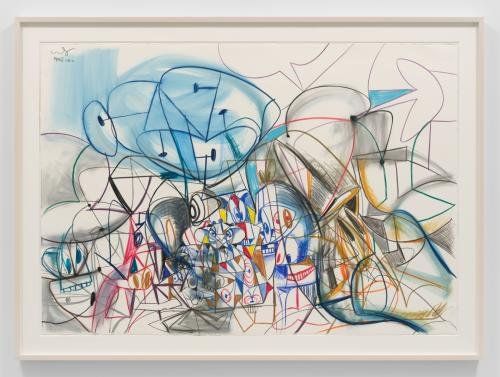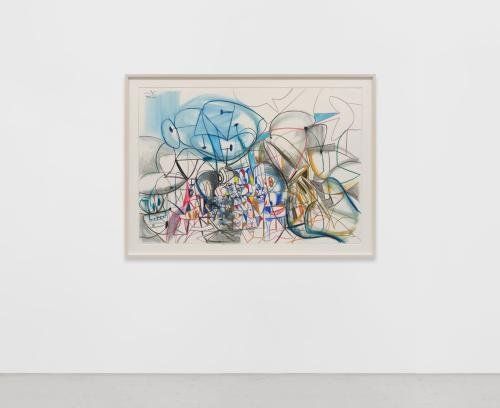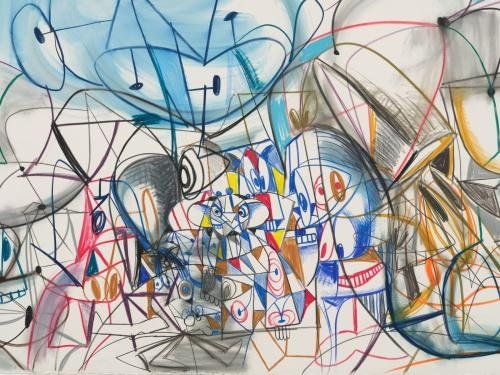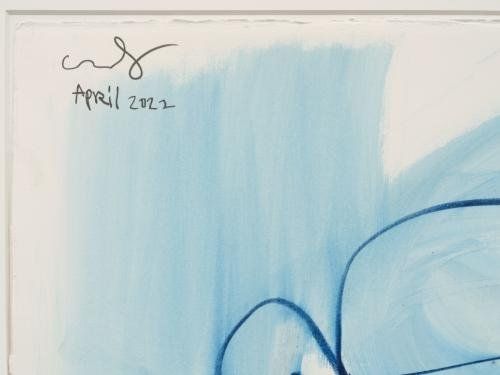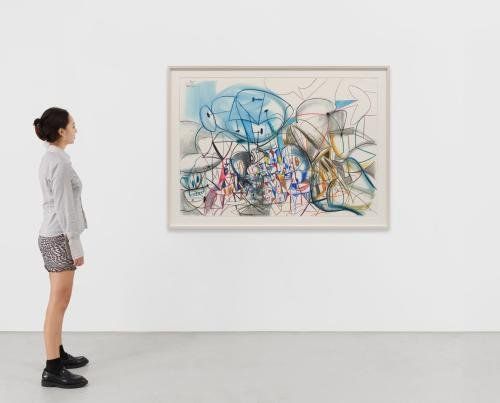2022
Ink wash, crayon and graphite on paper
102.9 x 152.4 cm / 40 1/2 x 60 inches
121.9 x 167.6 x 5.1 cm / 48 x 66 x 2 inches (framed)
| Estimate: | $5 - $10 |
‘They are about freedom of line and colour and blur the distinction between drawing and painting. They are about beauty and horror walking hand in hand. They are about improvisation on the human figure and its consciousness.’ – George Condo [1]
A fervent eruption of contours and fragmented figures vibrate with energy in George Condo’s ‘Invasion’ (2022). Eyes, teeth, and occasional ears unravel as the densely packed center resolves to abstraction in a frenetic burst of synthesized shapes and succinct loops. Tints of blue and black rendered with wide, gestural strokes of ink wash surround highly saturated slices of red, yellow, and saddle brown – this dissipating concentration of colour mirrors the dissolving clarity of the figures, which are already ambiguous in the congested core. Pupils center concentric circles, as if moving in and out like the eyes of a cartoon freshly walloped over the head with a frying pan; this dynamic repetition of motifs prompts a frenzied urgency and accelerated motion. Condo’s depiction of the human condition by way of fractured perspective and layered psychological states creates a visual language for chaos.
A similar speed of movement is found in Condo’s ‘Rush Hour’ (2010) in the collection of the Metropolitan Museum of Art, wherein commuters overlap to create a blur of forms, visages and interior worlds. Condo prompts the viewer to look introspectively, creating a distinct aesthetic experience that extends beyond the picture plane.
Illustrating the union of figuration and abstraction within Condo’s work, curator Laura Hoptman writes, ‘[The works] teem with bodies whose sinuous outlines both define their shapes and knit them to the landscape that contains them. Realistic details like breasts, eyes, and toothy grins struggle to emerge from the rich atmosphere of line and Cézannesque passage that comprise the backgrounds. It is as if this painterly primordial soup is tugging these figurative forms back into itself, impeding their complete transformation from shapes to images.’ [2]

